The Switch 2 is Nintendo’s first console in almost a decade, but after a week of play is it an evolution or revolution?
When the Nintendo Switch launched way back in 2017 it was by no means the wild success we know it as today. Off the back of an abysmal Wii U launch, it left the Big N chasing its tale and betting big – a hybrid of its popular handheld line-up and a more traditional home console offering. But despite the scepticism, the Switch just worked.
The Switch 2 is entering a whole different landscape. For the first time in a long time Nintendo has seemingly chosen to give fans what they want and not dramatically reinvent the wheel. It’s a device that feels like evolution rather than revolution, but depending on who you are, that’s hardly a bad thing…
From the moment you pick up the Switch 2 the device instantly looks and feels sleeker, considered and much more premium, but more considered. The screen is bigger, the joysticks are wider and the general aesthetic although less playful, looks far less like a kids toy – a smart move considering its newer competitors in the market.
The Switch 2 does obviously look pretty similar to its older sibling, but one of the first differences you’ll spot is the new C Button on the right Joy-Con, designed to trigger Nintendo’s fresh Game Chat functionality. Long-requested by fans, the system now has an in-built way to voice chat with your friends with a Discord-styled interface. Invest in Nintendo’s USB-C camera and you’ll even be able to video chat, which feels revolutionary form the company behind Friend Codes. I doubt the vast majority of gamers will utilise the function during Mario Kart World, but seeing the live faces of your friends during particularly sketchy races is pretty entertaining, even if the playback suffers some serious slowdown.
Speaking of the humble Joy-Con, with the older rail mechanism copping the boot, it allows the Switch 2 to rethink its approach, this time with magnets. Both left and right Joy-Cons now effortlessly snap onto the screen in an action that is always immensely satisfying. It also feels much sturdier than its predecessor and, outside of truly exerting some powerful force to pry them off, the only way you’ll be disconnecting your Joy-Cons is via the release buttons on the rear of the console. This prevents the disconcerting wiggle that the rail system provided on the original Switch and makes the whole unit feel more solid as a result.
Love Film & TV?
Get your daily dose of everything happening in music, film and TV in Australia and abroad.
But while the externals are notably prettier, it’s the internals that really matter and where the sheer evolution of the Nintendo Switch 2 shine. Take the screen as a perfect example. At a pretty sizable 7.9-inches, the Switch 2 isn’t messing around and finally capable of delivering a 1080p resolution in handheld (up from 720p in the previous models), support for HDR and up to 120 fps (for titles that allow it). Throw the system into the new, more powerful dock and you’ve thankfully got a crisp 4K resolution onto your television.
It’s a huge step up for the company that has been known to lag behind its competitors for many years, and while it’s still obviously can’t match the sheer grunt of the PS5 or Xbox Series X, the Switch 2 is pretty darn competitive in the handheld space, especially when you factor in the asking price (the beefy ASUS ROG Ally X, for example, will cost you almost double).
All this tech talk might be lost on you, but combined with more powerful graphical hardware and processing tech, it means your games are going to look markedly better on the Switch 2. The Legend of Zelda Breath of the Wild can finally run in 4K 60 frames a second, Pokémon Scarlet and Violet can finally deliver on the promises is seriously comprised release squandered and modern hits like Cyberpunk 2077 are downright impressive.
The big downside here is that the screen itself is still an LCD panel, a big step down from the Switch OLED. It’s understandable that Nintendo has made this call to keep production costs and unit prices down, but it’s still going to be a tough pill to swallow for many, even though this new LCD screen gets pretty darn bright and feels a lot crisper.
The improved performance also does make an impact to one of the console’s other key factors – battery life. Where the Nintendo Switch OLED Model was capable of 4.5 – 9 hours, the Switch 2 can only net anywhere from 2.5 to 6.5 hours, and that was true of my testing depending on the nature of the game. It’s not ridiculous when compared to some other handheld offerings like AYANEO but it does make the unit slightly less portable unless you’re planning on being near a power outlet or packing a battery pack.
But should you pick up the Switch 2 that’s inevitably going to be just one of the accessories you’ll want to invest in, so luckily there’s already no shortage of options. It’s still early days but here’s the pick of the litter so far:
Controller: Nintendo Switch 2 Pro Controller – $119.95
A total no-brainer if you’re looking for the most premium way to play your Switch 2, the Nintendo Switch 2 Pro controller is a big winner. I’m still not entirely convinced by the two-toned colour design, but I can’t argue with how much nicer It feels in the hand with a slightly grippier matte black finish. There are also two programmable back buttons, which will be a godsend for players looking to streamline their playstyle, especially once titles like Elden Ring finally make the jump to the platform.
If you already own a Nintendo Switch Pro controller, there’s arguably much less incentive to pick up this new iteration considering the core formfactor and functionality remains the same. That said, you will lose the back buttons and are strangely unable to wake the system up from sleep mode (an ability seemingly reserved for the new controller), so how important either of those factors are is up to you.
You can pick one up from the Nintendo Store for $119.95.
Camera: Nintendo Switch 2 Camera – $69
If you plan on jumping into the Nintendo Switch 2’s Game Chat functionality (which is free until March next year), then you’re going to need a camera. If you already have a USB-C web camera laying around, Nintendo is mercifully allowing those devices to play nice with its hardware, but if you don’t, you can always pick up this official unit instead.
Priced at $69 from the Nintendo Store, it might not be the cheapest option available, but it does smartly match the general aesthetic of the Switch 2 family’s smooth curves and black finish. The 1080p resolution provided respectable results during my testing with Mario Kart World and the fact that the lens sits on its own stand, has a built-in privacy screen and is freely adjustable ticked all the boxes I needed while still being entirely portable. I was even surprised to see a small grip to help keep the 1.5m cable in place for better cable management. Big win.
Case: Charging Case for Nintendo Switch 2 – $99
Cases are without question the most crowded market for the Switch 2, but despite an absolute bevy of options I’ve actually been giving Belkin’s offerings a whirl and have been pretty impressed.
I’ve primarily defaulted to the Travel Case which has been great to slot into my bag for the daily commute thanks to its abrasion- and water-resistant, polyester exterior and brushed velvet interior lining. It feels noticably superior to Nintendo’s own offical offering and exudes a bit more style as well. There’s even slots for game cards and a hidden AirTag in case your device goes walkabout. The only issue is that it seems the cutouts for the shoulder buttons aren’t entirely even meaning one side of the system falls in flush while the other side juts out a little more than I’d like which could put your joysticks at risk from large bumps.
If you really want to take things up a notch though, you can take a look at Belkin’s ‘Charging Case’. While the core aesthetic and design is almost identical to that of its cheaper sibling it is a bit chunkier in size. But that’s because this absolute unit doesn’t just leave a neat little space for a separate battery pack, it actually comes bundled with the case. Yes, strapped to the underside of the case is one of Belkin’s 10K power bank. With a max 20k wattage it won’t be the fastest unit around, but it’s still capable of recharging your Switch 2 up to 1.5 times while out and about town. I’m just not entirely sure how long I’d leave it all closed up because things can get a little warm.
It’s a well-designed bit of kit and at $99 is pretty reasonably priced if you’re keen to solve multiple accessory woes at once.
Memory Card: SanDisk microSD Express Card 256GB for Nintendo Switch 2 – $79
If there’s one thing I learned quickly is that despite the expanded base storage of the Switch 2 (256GB vs the original’s measly 32GB), that’s going to fill up just as fast. While Mario Kart World will only steal around 21GB of space, Cyberpunk will eat up a mammoth 59GB and Yakuza 0 Director’s Cut a sizeable 45. Needless to say, you’re going to need a memory card, and we’d recommend jumping onto SanDisk’s 256GB option.
While much larger options are available, this is by far the easiest alternative that you’ll actually be able to get your hands on. Plus, at $79.95 it’s a pretty reasonable cost to double the storage capacity of your console so you can comfortably allow a bit more variety in your library. It might not be the most exciting purchase but most importantly installation is designed to be painless, easily slotting into the system and requiring a quick format.
As a whole the Nintendo Switch 2 is an instant win for Nintendo. It refines an already hugely successful formula into a device that finely puts the classic company back into the conversation with gaming’s biggest players. It’s early days but I expect big things to come.
The Nintendo Switch 2 is available now for $699 or $769 as part of a Mario Kart World bundle.

































